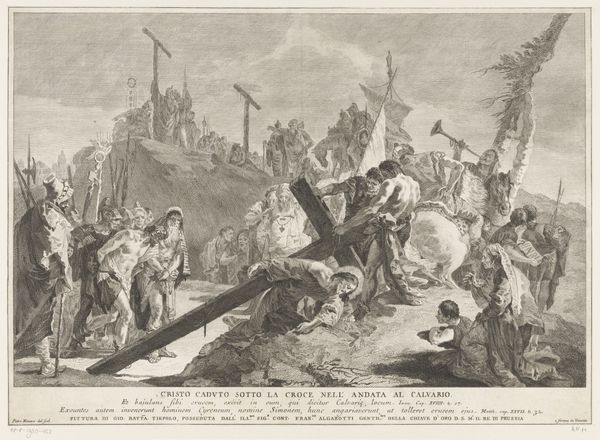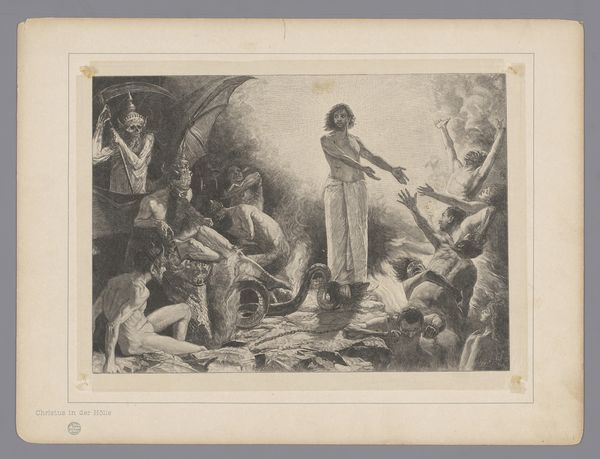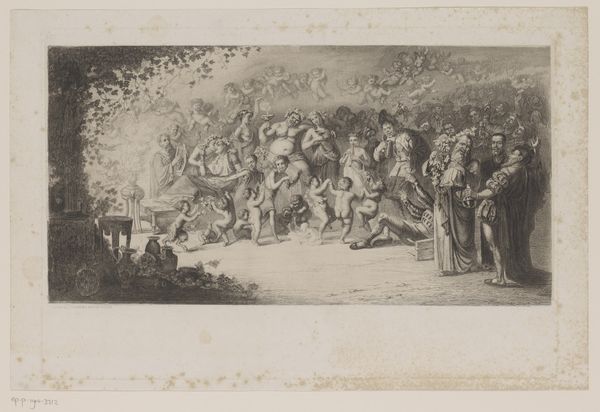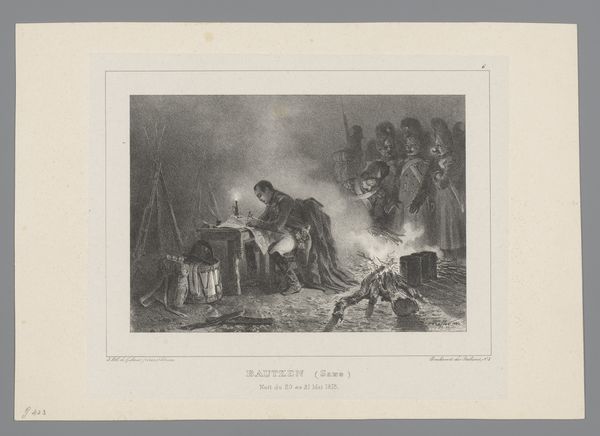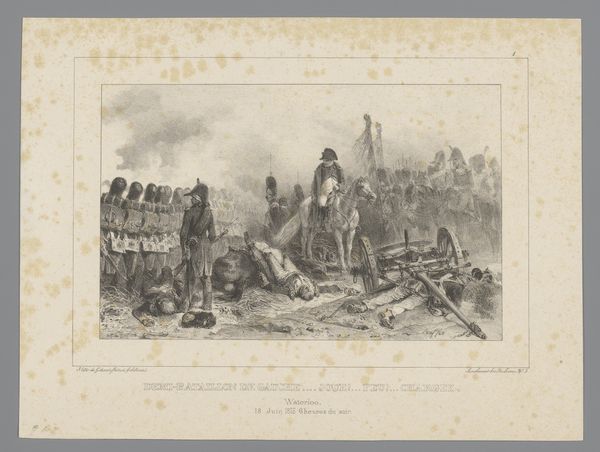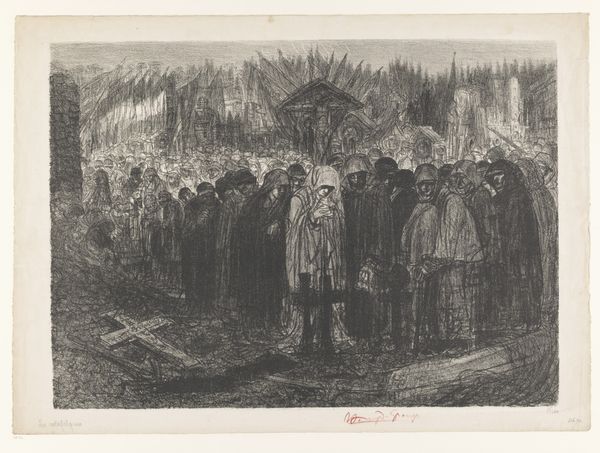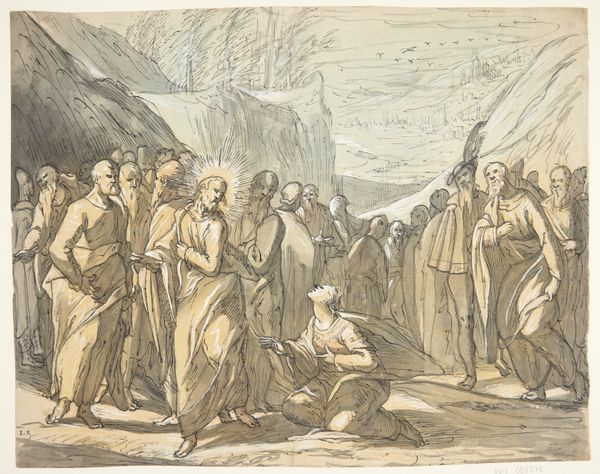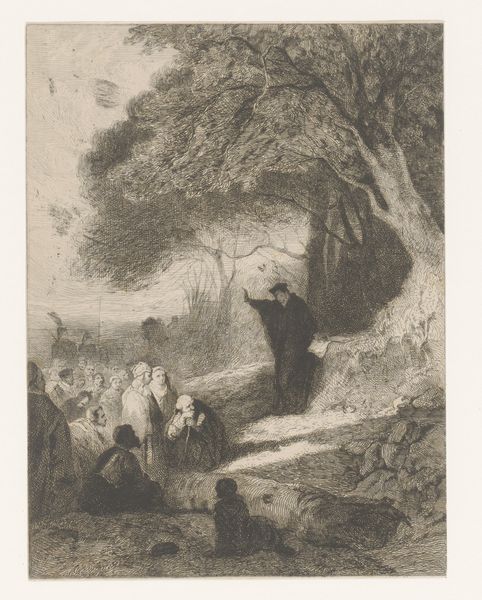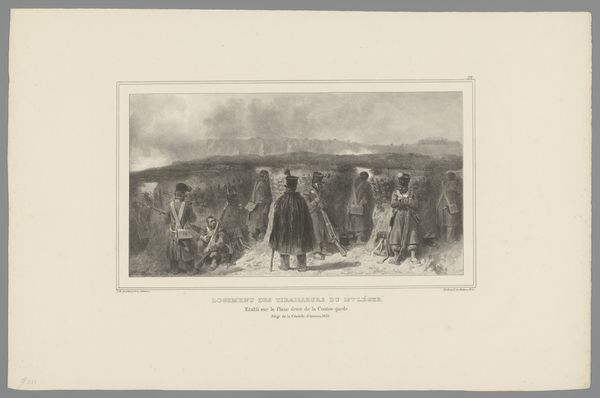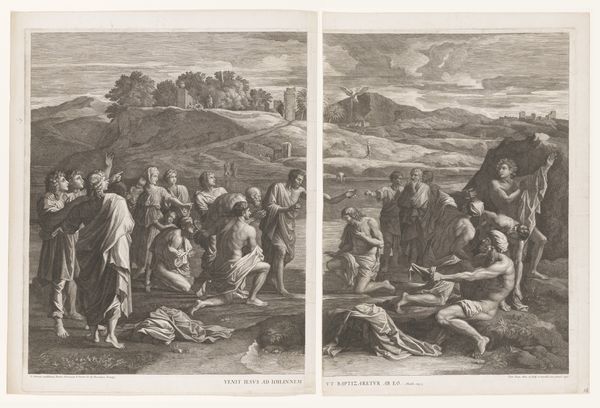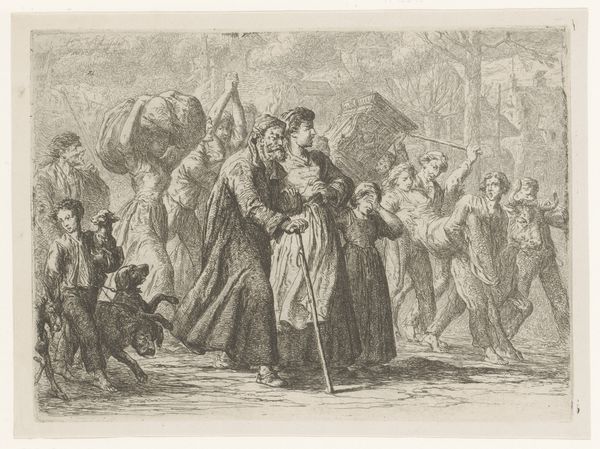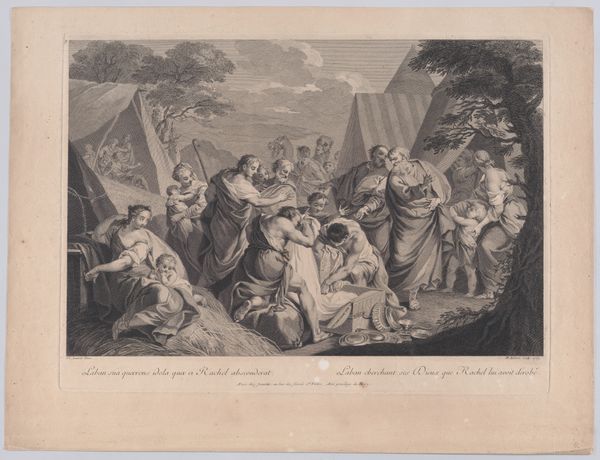
Around the Council Fire, The Young Brave's Speech (from "Harper's Weekly") 1873
0:00
0:00
drawing, print, engraving
#
drawing
#
narrative-art
# print
#
engraving
Dimensions: Image: 9 1/8 × 13 9/16 in. (23.1 × 34.5 cm) Sheet: 10 1/16 × 14 3/8 in. (25.6 × 36.5 cm)
Copyright: Public Domain
Curator: Looking at this print from 1873 titled "Around the Council Fire, The Young Brave's Speech," you are immediately struck by the density of figures around a central fire. It is striking to see this level of gathering with such visible levels of authority and attentive audiences in a historical depiction. Editor: Yes, it has a captivating narrative feel, doesn't it? You can almost hear the murmur of the crowd, sense the weight of the moment. This particular drawing by Theodore Russell Davis, published in Harper's Weekly, really highlights the importance of intergenerational dialogue within Indigenous communities. I am wondering about this "young brave" as the speaker... Curator: Absolutely. Consider how the artist chooses to frame this figure amidst the context of manifest destiny and cultural erasure. Davis presents him standing tall, suggesting leadership, but within a space already impacted by external forces – note some uniformed figures, probably federal representatives. Is this about resistance or assimilation? How did that context shape this community? Editor: Precisely, what is visible and what is not, matters immensely. Who held the power of representation? Davis's work appeared in Harper's Weekly, a prominent publication instrumental in shaping public perception. What narratives was it reinforcing? The image speaks of inclusion and ceremony, but, who did this image serve at the time and who does it serve today? Curator: The composition itself uses light and shadow to create a sense of drama and importance around the central figure and I wonder if its publication was less an accurate accounting of what was and instead, a constructed, didactic representation to galvanize public support. Also, if we look closely, do we notice different modes of dress and posture? Editor: Indeed. Perhaps we are invited to ask critical questions. How were the identities of Indigenous peoples co-opted for social, political, and historical aims? Whose voices were amplified and at what cost? I'm really interested in that. Curator: This forces us to confront the complicated relationship between representation, power, and historical narrative. What appears initially as a neutral depiction takes on so much complexity with even a bit of careful, questioning attention. Editor: Agreed, it underlines the need to remain critically aware of the biases inherent in historical depictions. Understanding the context really opens a space to a powerful reimagining.
Comments
No comments
Be the first to comment and join the conversation on the ultimate creative platform.

